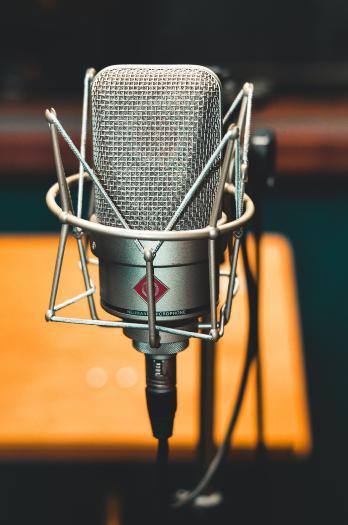Recording the HarpContact pick-ups, such as the Schertler Basik, are great for amplifying live performances: they are convenient, portable and work well with PAs. However, for a natural sound, engineers generally insist on using stand-alone microphones when recording.  An engineer explained to me once that the key to getting a good sound was in the correct placement of the microphone. Yet the design of the harp seems to thwart correct microphone placement at every turn. First of all, the nearer you place the microphone to the sound source, the stronger the recorded signal level. If a weak recorded signal is boosted to the required level, you risk hiss on the track. However, one look at the wide surface area of the harp and it is immediately obvious that there is no possibility of miking up close, without unnaturally accentuating the few strings that the microphone is pointing to. Worse still, a close microphone picks up all the percussive sounds inherent in playing the harp – and we won’t even mention lever or pedal changes! The first problem, then, is of getting a balanced, strong enough recorded signal, without too much extraneous noise. The second problem is in getting a natural harp sound. The harp is designed to sound best from the front, to an audience several metres away. If you place a microphone at the front of a harp, you accentuate the bass strings, which results in an unacceptably boomy sound. As the harp is designed to be heard from some distance, the familiar sound of the harp contains a lot of room ambience: if the recording is too close, you may get a good signal level, but it won’t sound natural. So, these are the problems. Here are some solutions: In an attempt to boost the signal level, most engineers use two or more microphones; usually staggered on either side of the harp and pointing away from the bass strings. This means that they can mike up relatively close and yes, each microphone does accentuate a certain area of the harp, but mixed together, a balanced sound is possible. Microphones are placed at a slight angle to the strings, rather than directly towards them – partly to reduce the level of the percussive sounds, but also to introduce some room ambience, which, as we have seen, forms an integral part of the recognisable sound of the harp. There is always some experimentation involved, so the final tip for recording the harp is: allow lots of time. |
